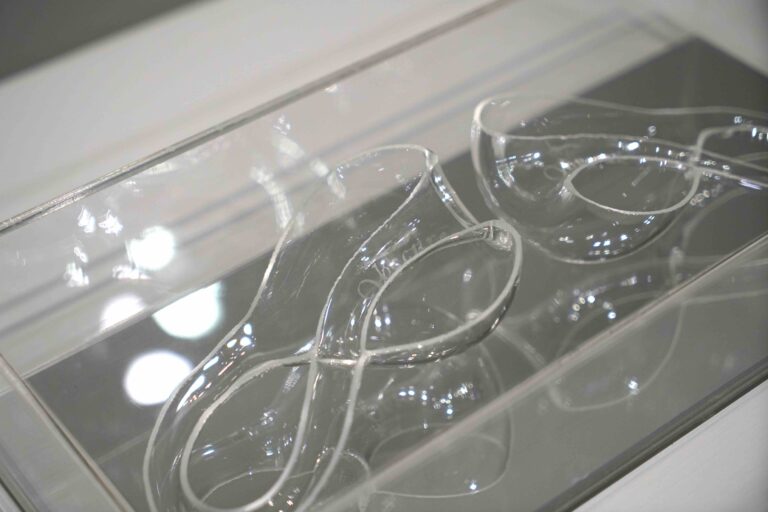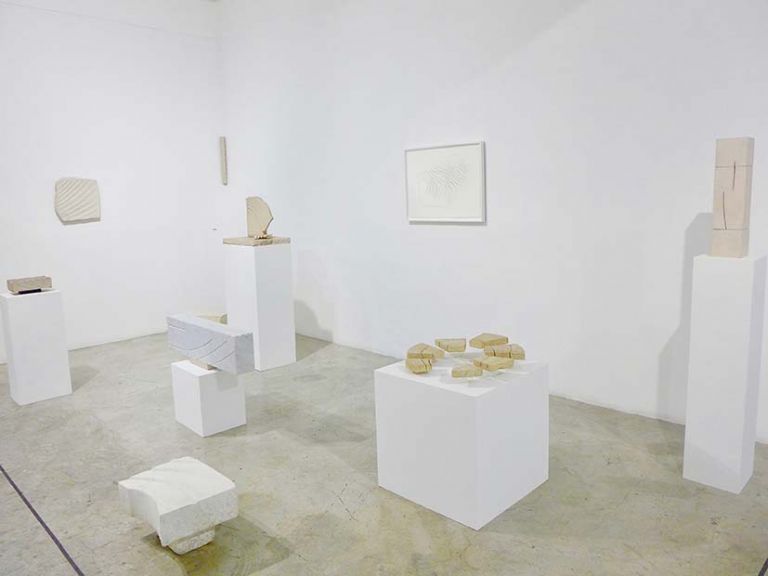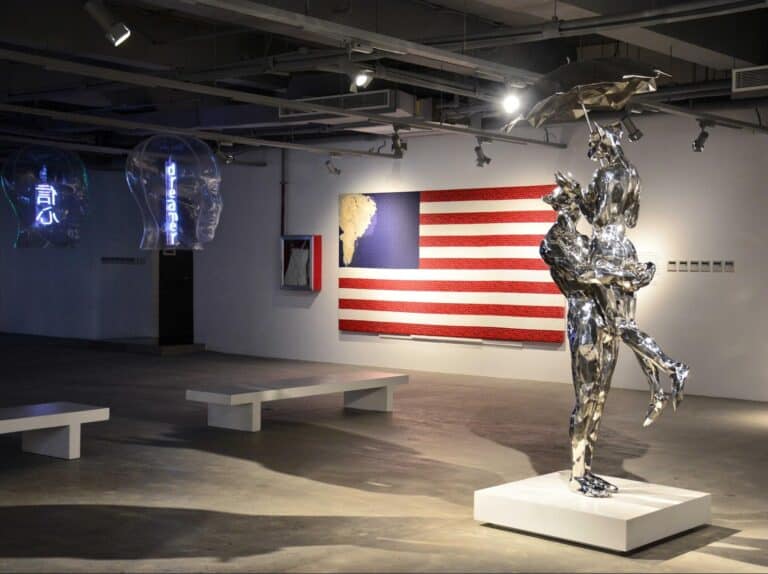Ever wondered what the difference is, between nakedness and nudity? It matters because – contrary to popular belief — they are not one and the same.
While all nudes involve naked bodies, not all naked bodies are considered nudes. In order for the naked body to transcend into a nude, it will have to be viewed as an object of sexual desire. The late art critic, John Berger, made that criticism in the 1970s, during a time when the term ‘nude’ was generic for female nudes.
I begin by laying down these distinctions because the erotic and aesthetic appeal of the (mostly) naked bodies, by the late Teng Nee Cheong (1951-2013) that are on display in the exhibition, EMBODIMENT | SENTIENCE, at The Private Museum, provoke exactly these issues.
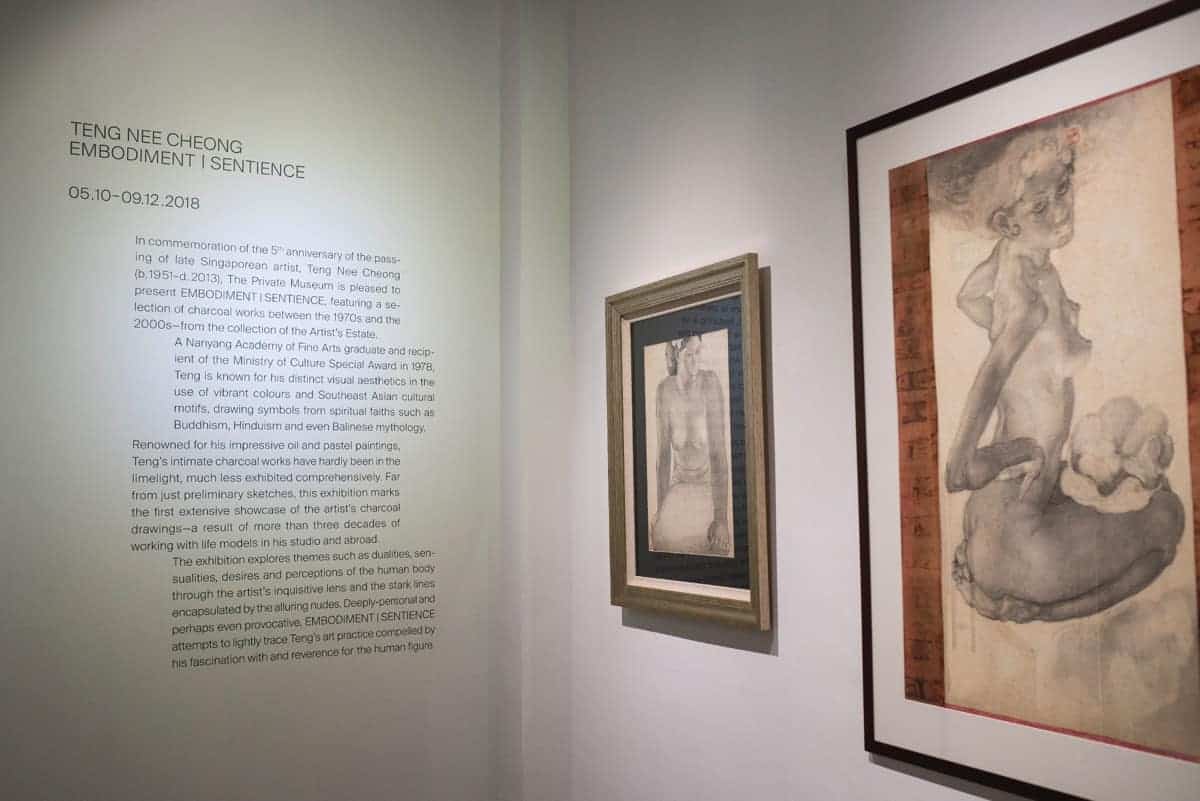
‘Erotic’, ‘provocative’ and ‘thought-provoking’ are just some of the terms which came to my mind as I viewed this exhibition. Held to commemorate the 5th anniversary of the artist’s passing, the show features 22 large charcoal works on paper, selected from over 300 figure drawings and sketches from the collection of the artist’s estate. The exhibition displays both male and female nudes (yes, I said ‘nudes’ not naked figures– but more on that shortly), which were produced between 1980 and 2005. While some of these works have been featured in group exhibitions during the artist’s lifetime, this is the first time Teng’s charcoal nudes are being exhibited together.
So, what makes these figures ‘nude,’ as opposed to ‘naked’? Simply put – their erotic qualities. These nudes are not only enticing in their languid poses, but also attention-grabbing with their sensuality, inviting one to partake further in that second or third look.
And look I did.
What came through strongly for me, as I studied these works, was the manner in which the nudity is presented to the audience. Although in most of the works, the subjects are portrayed as disconnected from us, the viewers (i.e. they look away, have their eyes shut or covered behind a casually flung arm, or have their backs turned towards us), such disengagement is not borne out of shame or embarrassment. Teng’s nudes know they are on display for us and they seem to derive much pleasure from doing so!
In one particular work, a male nude squats upright on his forefeet while bracing himself on his elbows, on an unseen support behind him. With knees spread wide and head flung back in wild abandon, the unnatural pose brings into focus the subject’s erect member. The air of hedonism and self-indulgence that surrounds the nude is unmistakable:
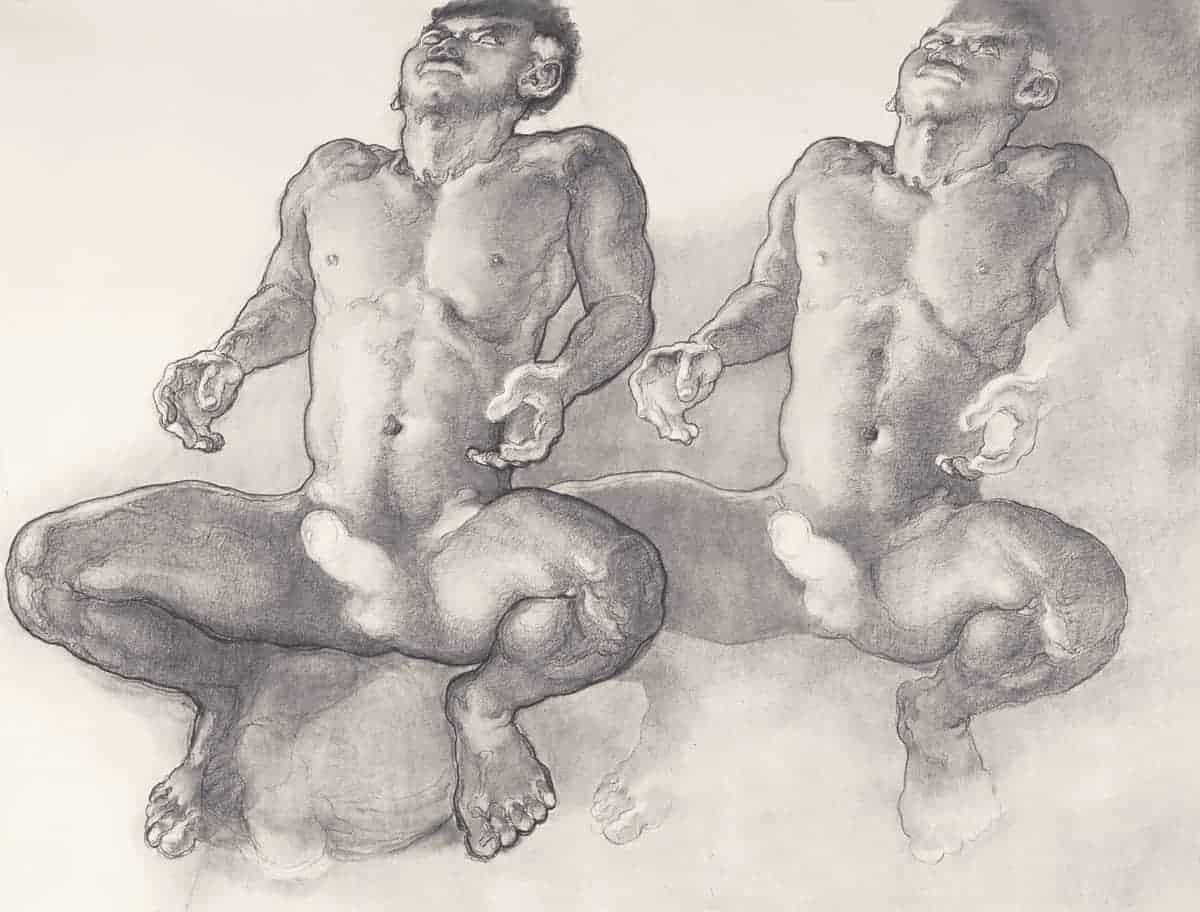
While both male and female nudes are well-represented in the exhibition, they are not rendered equally. The chasm between the two comes through strongly in the artist’s later works. I felt that a greater degree of eroticism was ascribed to the male figures. In nearly all of the pieces that feature male nudes, there is much emphasis placed on genitalia, either through the poses assumed by the models, or through the qualities of the charcoal medium, or both.
A number of the male nudes are depicted with their penises rendered with a kind of ‘rubbed-off’ quality which shows barely any detail. The impression of a penis is instead formed through the creation of space around the organ:
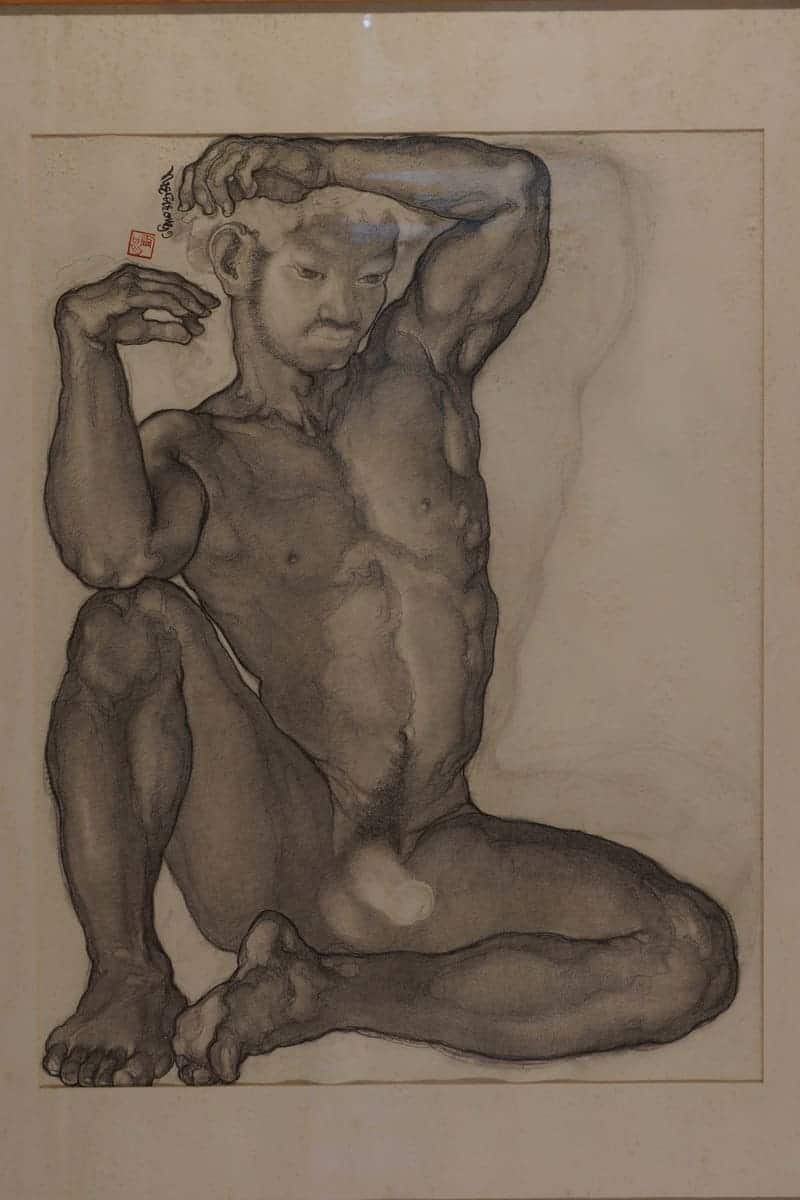
When I attended the show, I observed a woman nudging her male companion and then pointing to an artwork depicting a sexually explicit act of fellatio between two males:
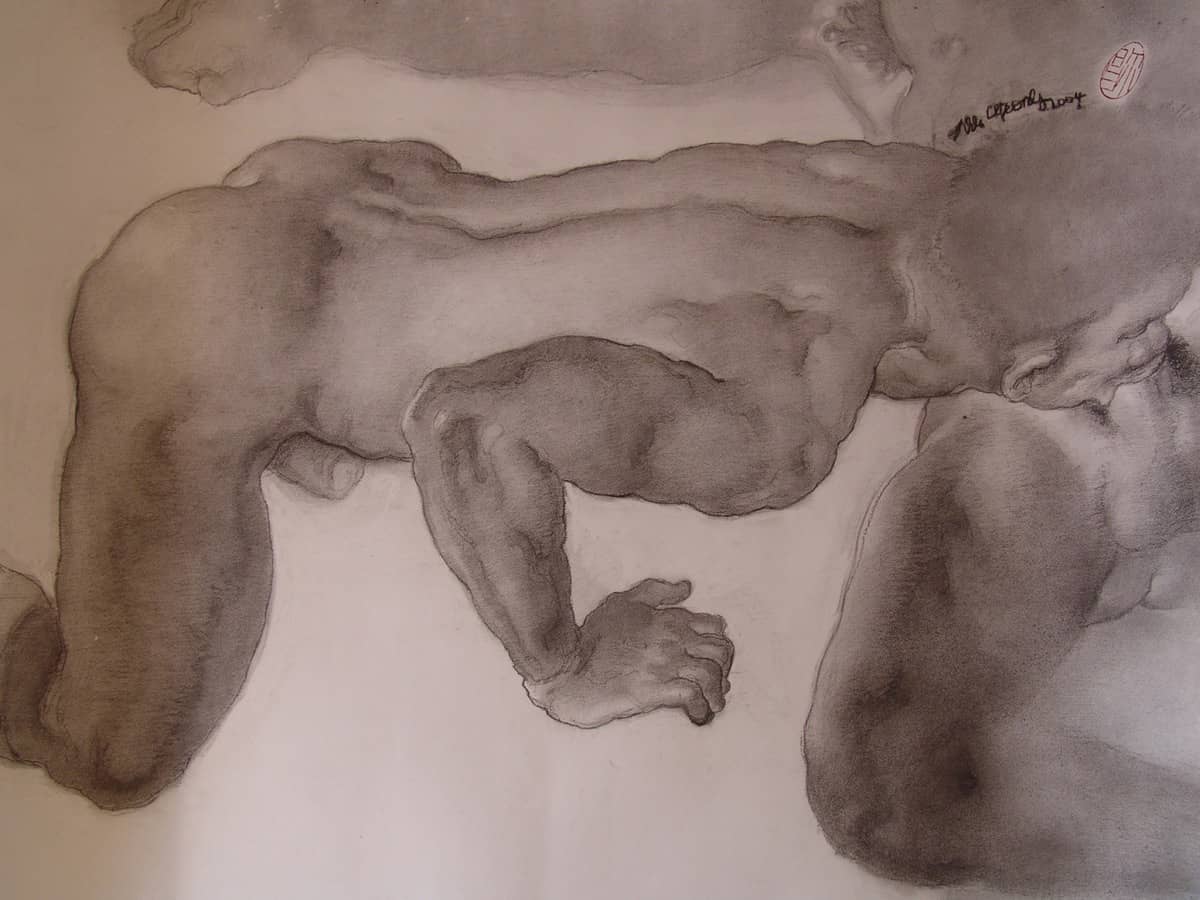
The woman at the exhibition gazed on, with a disbelieving look on her face, before hiding her disconcerted smile behind her hand.
Interestingly, this work is hung on a discreet wall in an alcove within the gallery space, alongside less confronting works. If the gallery’s intention was to prevent this particular work from setting the tone for the rest of the exhibition, its efforts were in vain, at least for me. The sexual overtones of the exhibition are unmistakable. I also could not help but wonder at the uncomfortable tension that sometimes exists between art and pornography.
What for example, makes Teng’s erotic piece more acceptable than say, the gay porn magazines at the centre of the debacle that was Simon Fujiwara’s Welcome to Hotel Mumbai?
Teng’s female nudes in comparison, appear to be far more sexually restrained than his male figures:
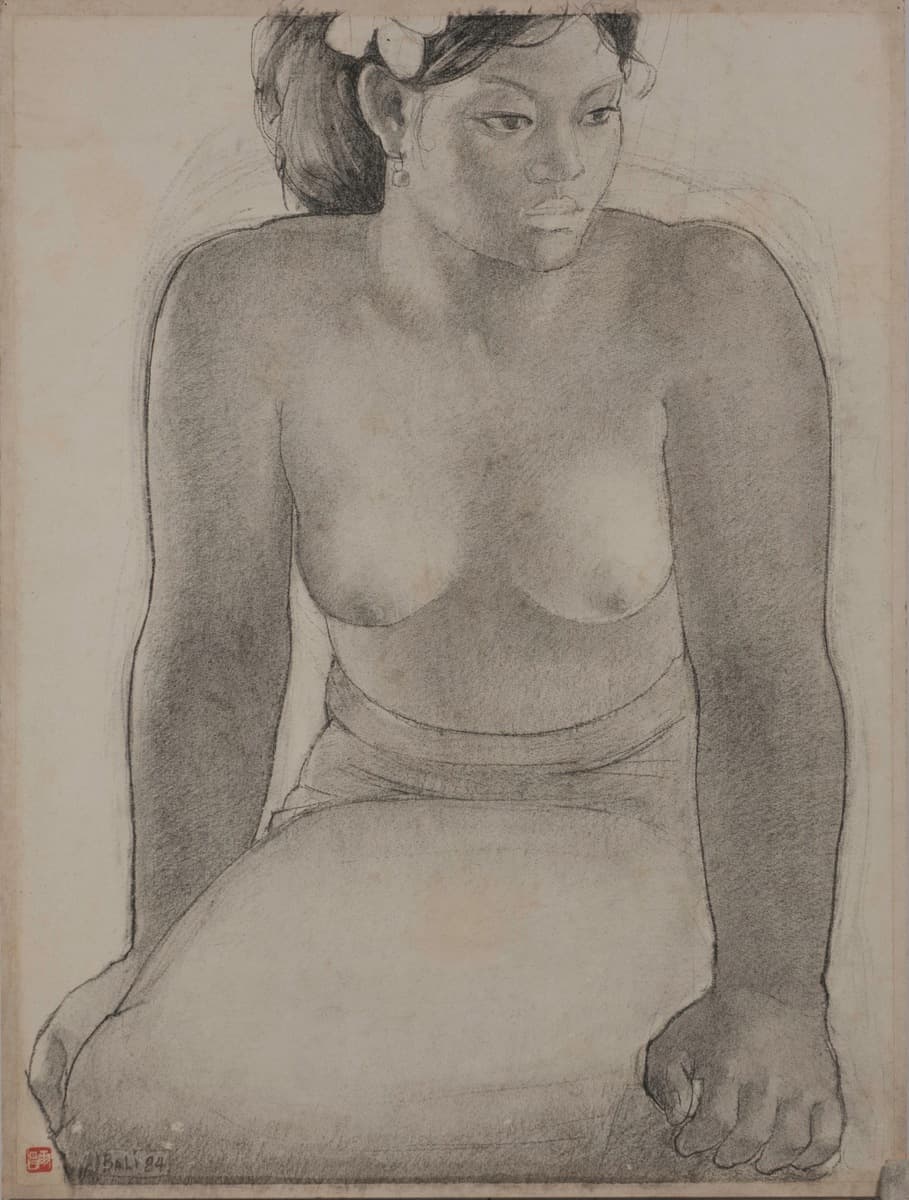
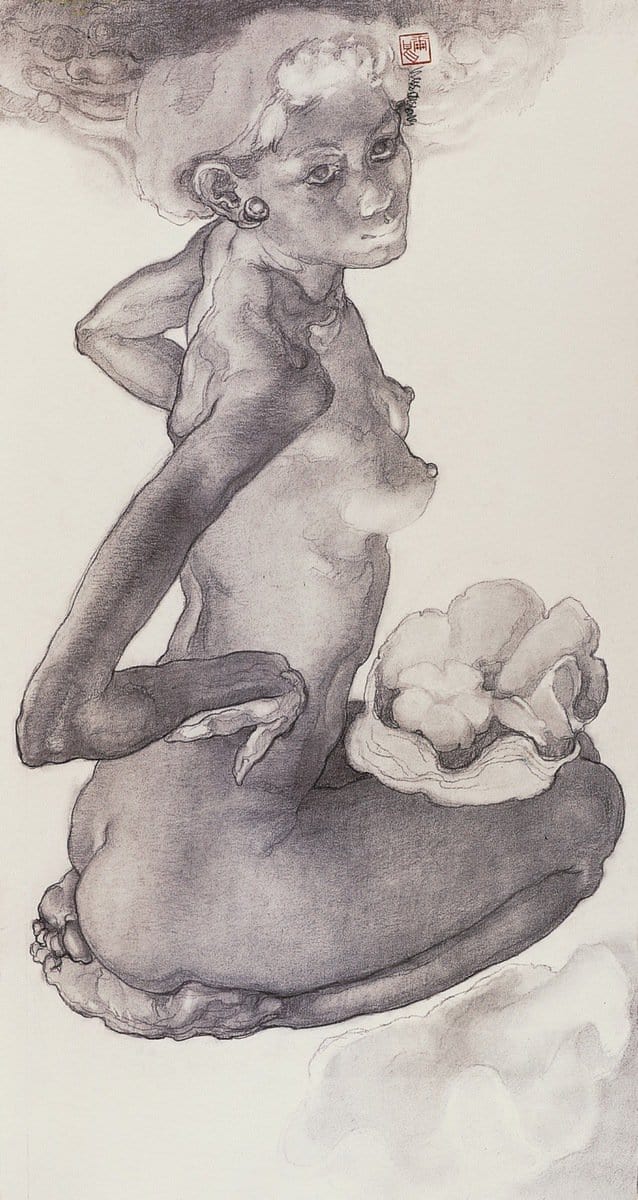
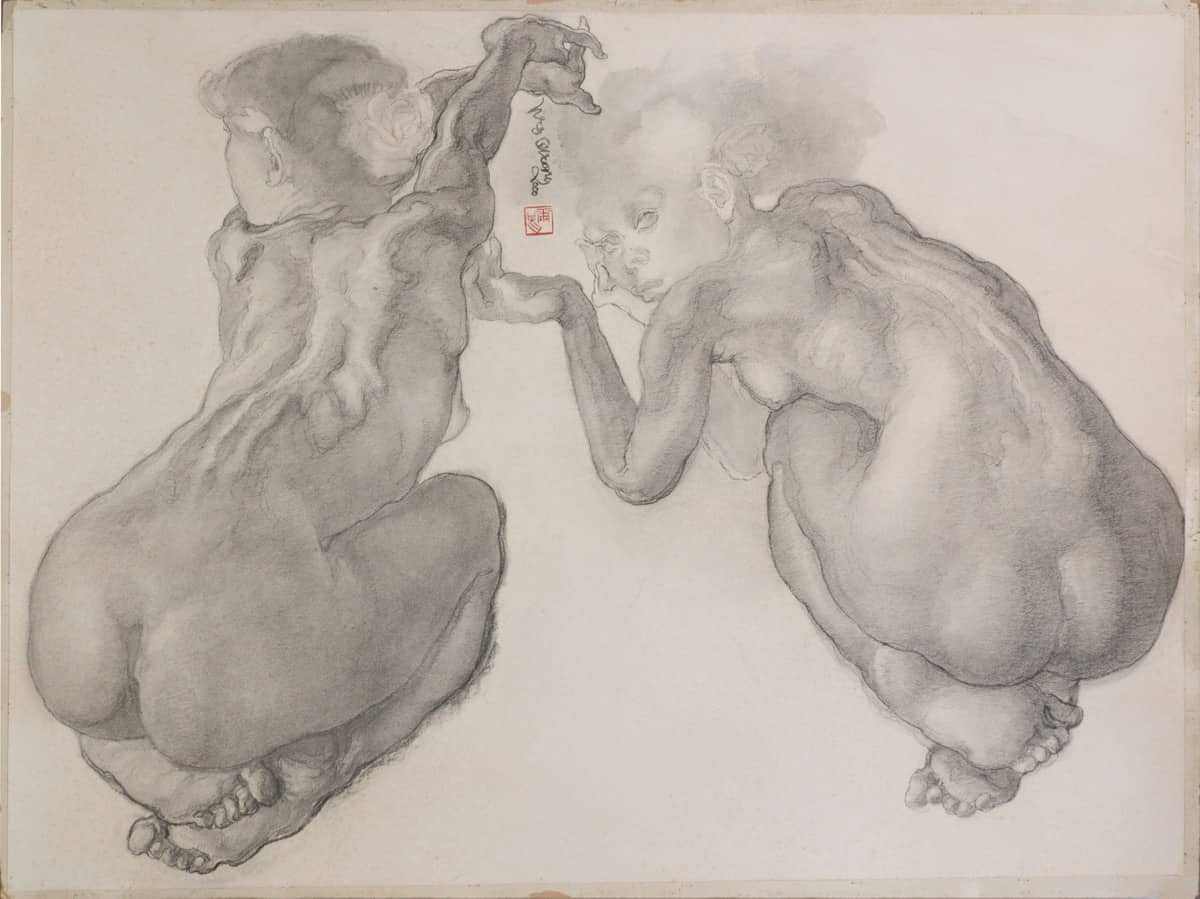
And that is as far as it goes where the sexual overtones of Teng’s female nudes are concerned.
It’s all comparatively tame if you ask me.
Perhaps this is just me being numbed by the scores of female nudes that I’ve viewed as a student of art history — more female nudes than I care to remember– that I find it refreshing to study male nudes for a change!
Critics have commented on the homoeroticism found in Teng’s male nudes and speculated on its correlation to the artist’s own sexual orientation. The earlier works on display in the exhibition were created during the early 1980s, a time when the taboo subject of homosexuality was beginning to make its presence felt in the local news. It remains a controversial subject to this day in light of the recent debate over the repeal of Section 377A of Singapore’s Penal Code. Teng himself refused to comment on such conjectures about his sexuality, while he was still alive, preferring instead to have his works appreciated for their formal qualities.
Technically, I consider these works beautiful, although admittedly, I am partial to charcoal as a medium. There is just something so mysterious, appealing and raw about works executed in charcoal. I should also mention how compelling Teng’s monochrome nudes are, and how at home they are when juxtaposed against the pared-down white walls and cement screed floor of The Private Museum.
Teng’s talent in the rendering of the human figure was well-established by the time of his passing in 2013. Given that the body of work on display here covers more than three decades, it would have been wonderful to see the evolution of Teng’s style over time in this exhibition, as well as more works from the 80s. I would also have personally preferred it if wall texts had been placed next to the artworks, instead of having artwork details printed separately on a piece of paper.
As an amateur artist myself, I nonetheless swoon at Teng’s mastery over his medium. Charcoal can be very deceiving to the uninitiated. Being a dry medium, it appears easy to handle.
However, its impermanence and easily- smudged quality can prove to be a challenge. With charcoal, it is near impossible to ‘erase’ mistakes once a mark has been made. One can certainly lighten a mark, but only to a degree. It is for this reason that artists working with the medium will integrate ‘mistakes’ into their final work. Teng however, went a step further and was able to develop a special ‘liquid’ quality to his charcoal drawing:
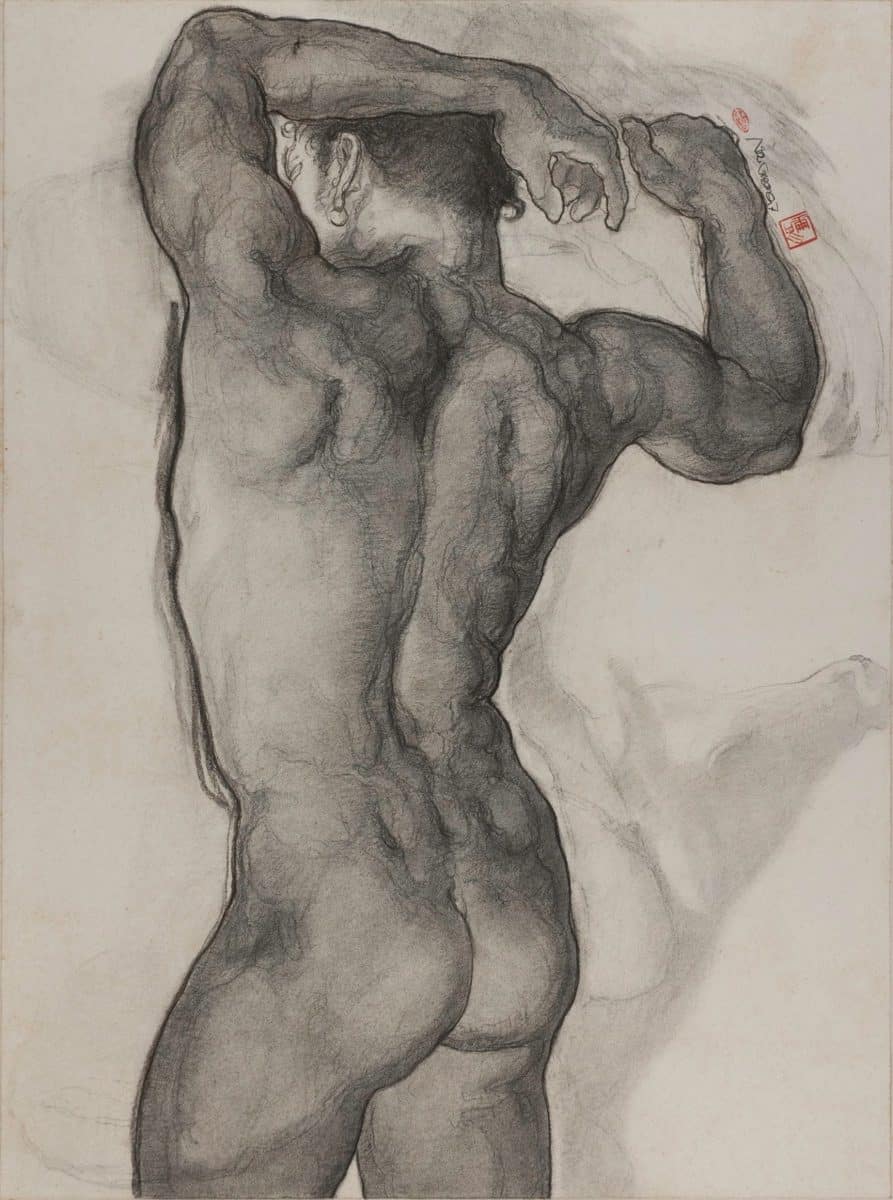
To me, the dynamic quality attached to Teng’s methods suggests movement and hints at the ‘life’ within these figures.
Indeed, Teng’s skill in the medium is unquestionable, and the exhibition EMBODIMENT | SENTIENCE is certainly worth making time for.
_____________
The show runs till 9 December 2018. All images are courtesy of The Private Museum.






